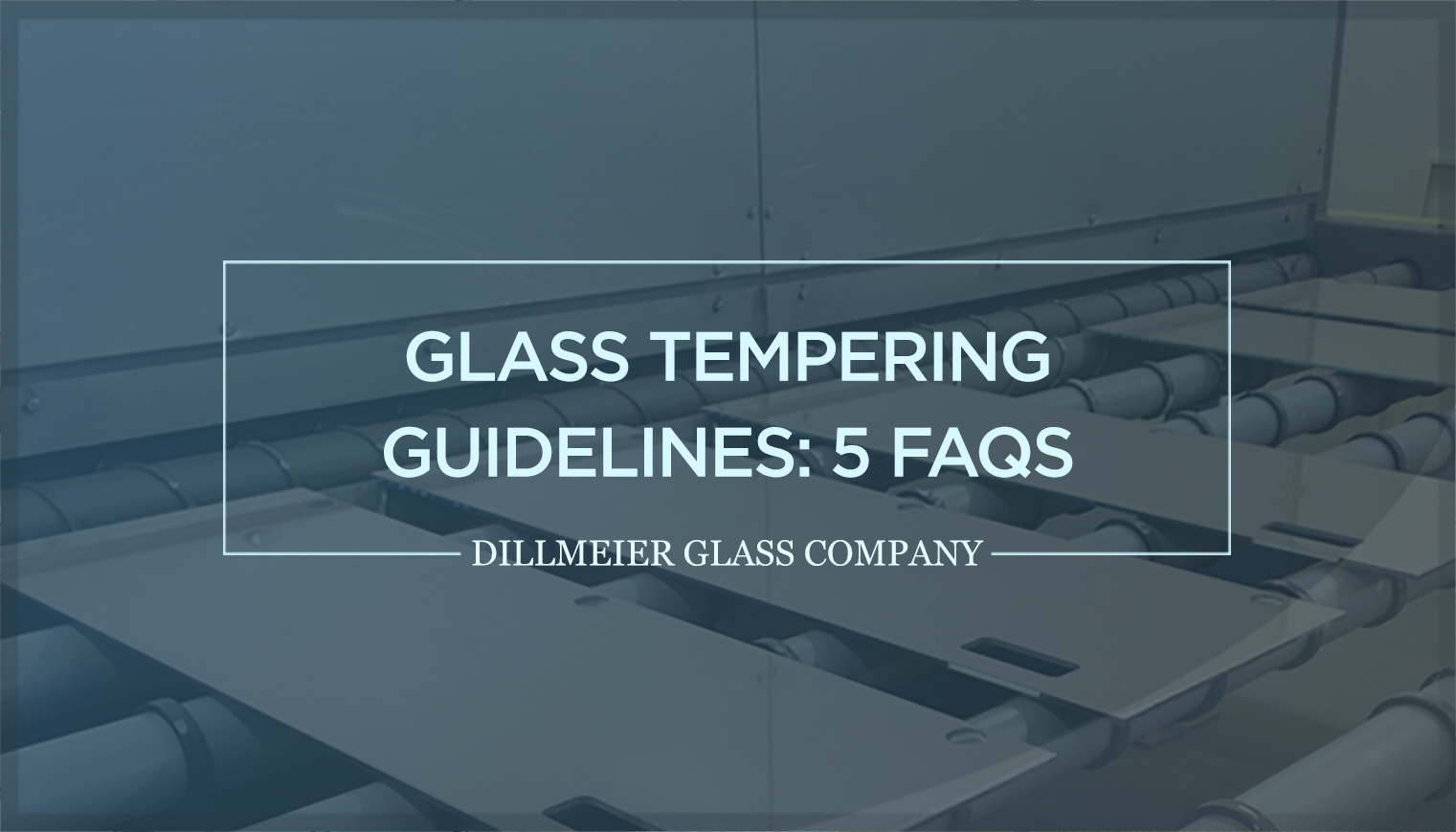Tempered Glass vs. Plexiglass: A Comparative Analysis
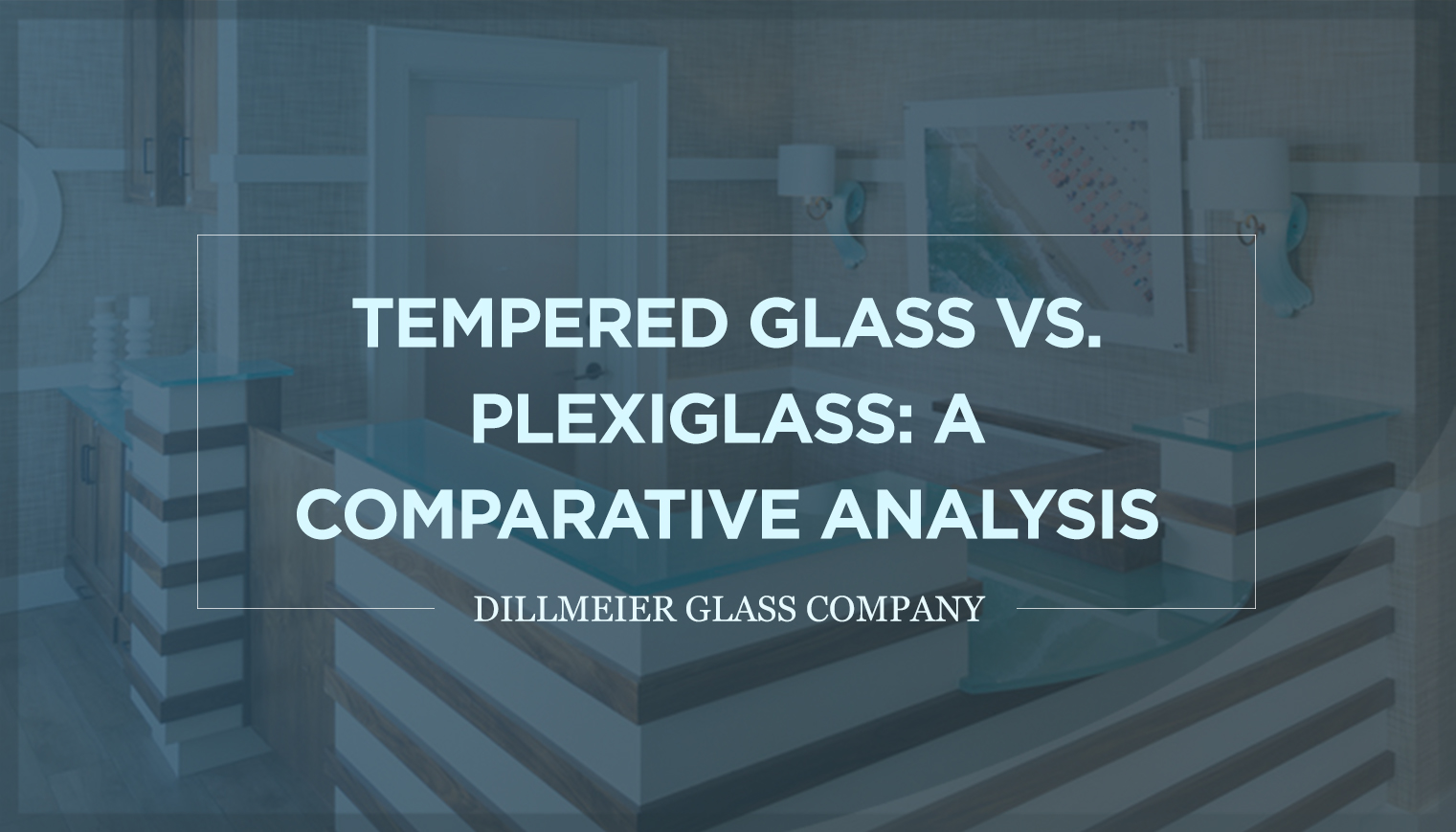
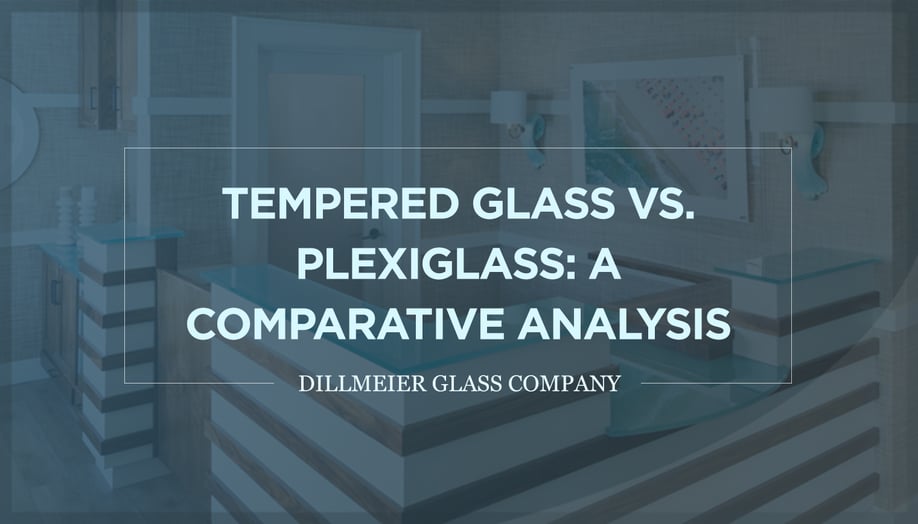 Similar to masks and gloves, glass dividers, partitions, and countertop shields have transitioned into necessary personal protective equipment (PPE) against the novel coronavirus (COVID-19).
Similar to masks and gloves, glass dividers, partitions, and countertop shields have transitioned into necessary personal protective equipment (PPE) against the novel coronavirus (COVID-19).
Whether you’ve implemented these products and safety measures, or are currently doing so to meet Centers for Disease Control and Prevention (CDC) reopening guidelines, the process involves several important considerations, such as materials, price, turnaround time, and design elements.
 Two popular styles are plexiglass and tempered glass, with the latter the least expensive, longest-lasting, most durable, and most aesthetically pleasing.
Two popular styles are plexiglass and tempered glass, with the latter the least expensive, longest-lasting, most durable, and most aesthetically pleasing.
How do you ensure you’re making the right choice for your work environment?
Below are recent tempered glass divider projects implemented by Dillmeier Glass Company within retail, spa, and office environments. These further demonstrate this material’s strength, competitive price point, and quick turnaround time.
Easy Retrofitting & Longevity
Two popular styles are plexiglass and tempered glass, with the latter the least expensive, longest-lasting, most durable, and most aesthetically pleasing.
Tempered glass withstands the test of time. Unlike plexiglass, its strength and durability eliminate scratches and cracks.
Low-iron glass is tint-free, creating an even more transparent appearance.
When compared to plexiglass, tempered glass costs less, lasts longer, is easier to obtain, and quicker to produce—all important for critical PPE.
Additional Features
Tempered glass dividers can also serve as magnetic, office marker boards. Available in clear or backpainted glass, they can be customized with metal backing.
Additional customizations include logos and other branding for a clean, cohesive look. A graphic designer can easily implement film design overlays on the glass. These can be changed out or removed, without scratching or damage.
Applications
Office PPE typically entails a glass divider retrofitted to a fabric panel with brackets mounted or clamped to existing furniture. These won’t scratch or damage upon removal.
A retail setting divider could be fixed mounted in customized shapes with a circle, square, rectangle, or full-width bottom opening for safe payment transactions.
Dillmeier Glass Company recently provided such customized solutions to a wide range of businesses across the country, including: ConocoPhillips Houston headquarters; a neighborhood grocery store; and Dream Spa & Salon in Westport, Conn.
Office Environments: ConocoPhillips
Dillmeier Glass and Agile Interiors, the largest U.S. distribution partner of customized interior manufacturer DIRTT—short for “Doing It Right This Time”—custom-fabricated a fixed-mounted desk solution for this Houston-based energy company’s corporate office reopening. This required a bonded, gapless glass divider for added protection and transparency.
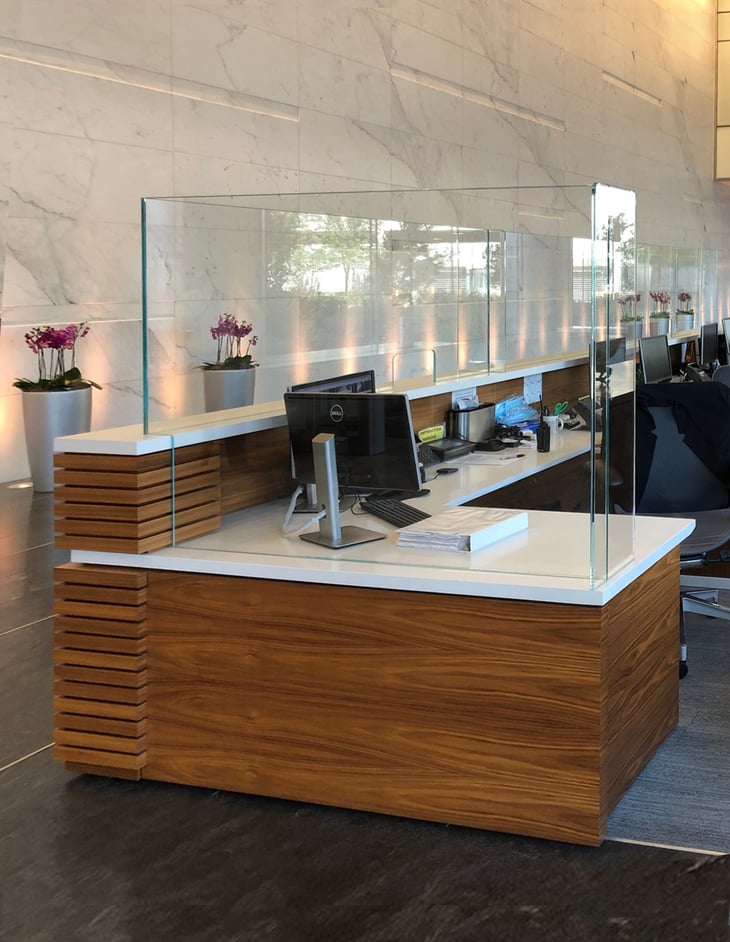
ConocoPhilips Desk Set
Retail: Local Grocery Store
This required shields withstanding daily wear and tear, increased customer traffic, and frequent cleanings. Rather than adding plexiglass, this supermarket implemented mounted tempered glass guards for social distancing at check-out lanes. A bottom square opening was included for easy point-of-sale transactions.
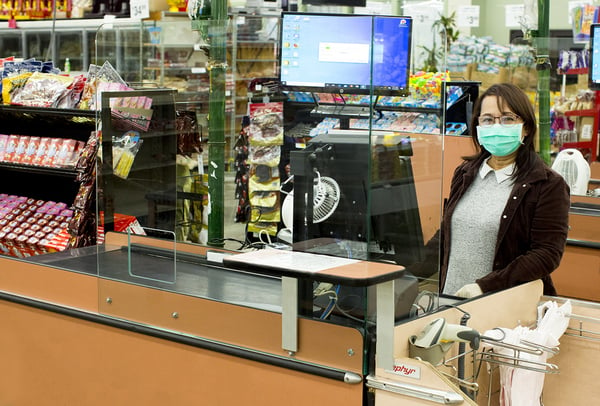
Custom Supermarket Checkout
Personal Care: Dream Spa & Salon
Dream Spa & Salon quickly incorporated PPE prior to Connecticut’s Phase 2 reopening. The spa’s reception area features a tempered, rectangular glass shield with drill-free, super-clamp desk attachments.
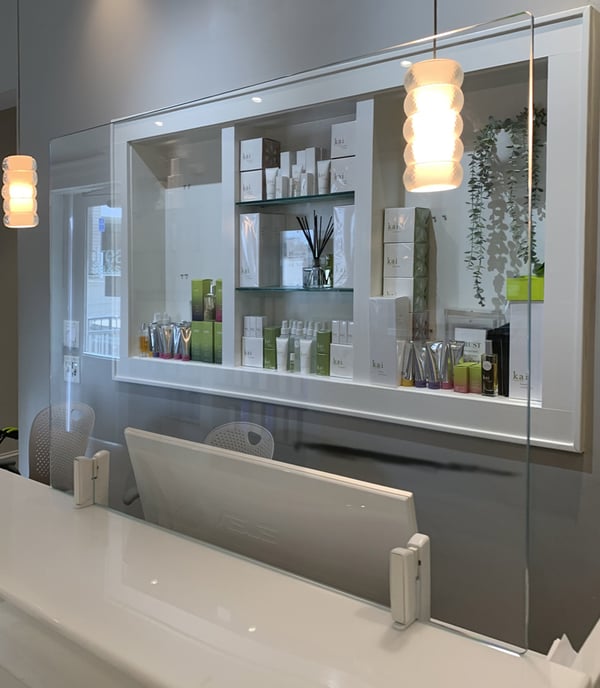
Dream Spa & Salon Fixed Glass Divider
A retail setting divider could be fixed mounted in customized shapes with a circle, square, rectangle, or full-width bottom opening for safe payment transactions.
We're Ready to Assist
Learn how we can safely retrofit workplaces, retail stores, salons, and other business environments to meet COVID-19 health and safety requirements.
Contact us for a free quote and assistance on a customized tempered glass divider or partition for your business or project.


